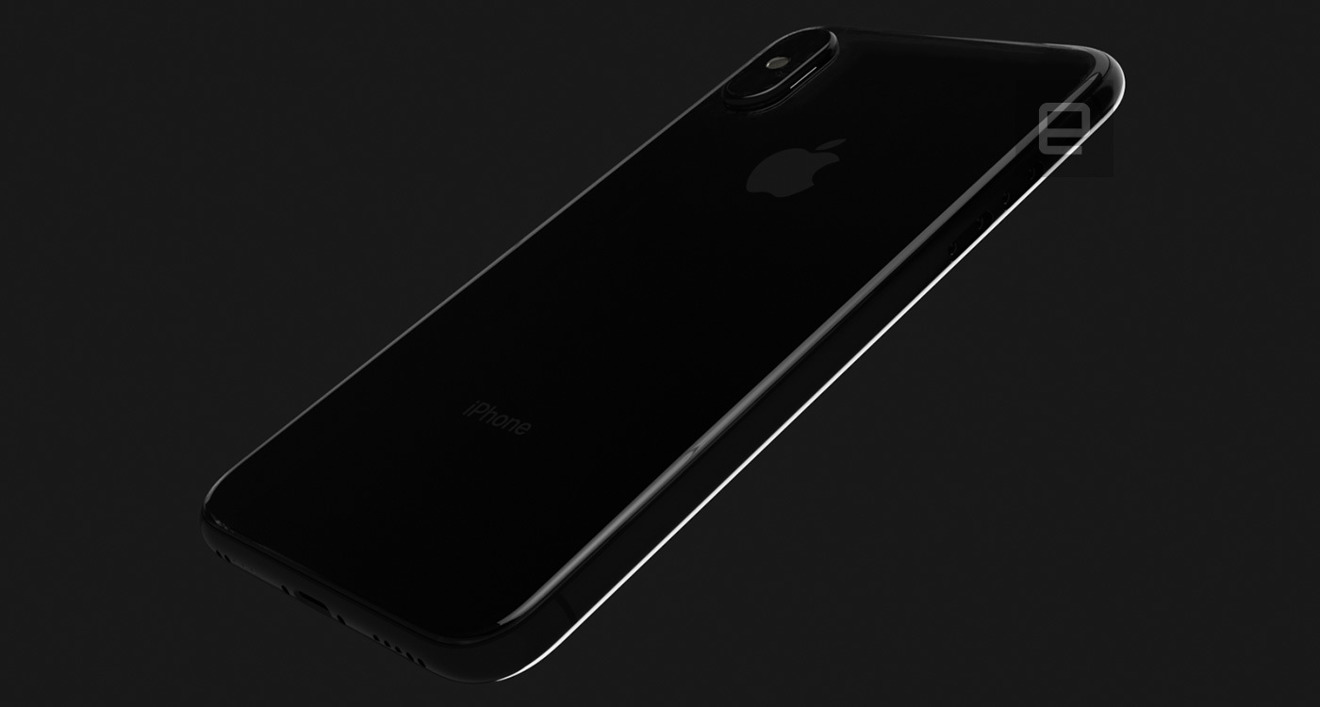If the so-called "iPhone 8" does not ship by the end of the third quarter, pent-up demand will only increase the subsequent holiday quarter's sales, rather than hurting Apple, one analyst believes.
Timothy Arcuri from Cowen & Company issued a note to investors on Wednesday saying Apple is still working on increasing yields of the AuthenTec Touch ID solution embedded in the screen of the "iPhone 8" — and that will hold up mass production somewhat. Arcuri believes that yield issues in the Touch ID solution, plus possible issues with the layered motherboard on the "iPhone 8" will push mass production from a "normal" July or August timeframe to October or November.
As a result, the analyst expects that iPhone shipments in Apple's fourth financial quarter will be lower than Wall Street's predictions of about 47 million, and will hit about 44 million. On the other hand, the delay in availability will push the holiday quarter's iPhone sales up to about 90 million, and Arcuri believes that Wall Street's estimates for fiscal year 2018 sales are "way too low."
Even with lowered sales predictions because of no "iPhone 8" in the quarter, the average selling price of iPhones in Apple's fourth fiscal quarter should rise year-over-year. Arcuri expects average selling price to climb in the quarter to a "conservative" $626, up slightly from 2016 even without any sales contribution from the "iPhone 8."
Arcuri still believes that investors aren't giving Apple's Services segment enough credit for Apple's earnings. Should that change, impact from seasonal sales variations wouldn't hit the stock so hard, and the stock could hit $175 in 2017.
In 2016, the iPhone 7 started shipping in the middle of September, with pre-orders arriving and limited retail stock hitting on September 16. Supplies of the iPhone 7 Plus remained constrained into the first calendar quarter of 2017. However, the vast majority of Apple's iPhone 7 family sales were in the holiday quarter, and not in the ending days of Apple's fourth fiscal quarter of 2016.
The "iPhone 8" is predicted to sport an edge-to-edge OLED panel with a 5.1-inch user space — the rest dedicated to virtual buttons. Slimming or removing the bezels would allow Apple to cram a larger battery into a form factor similar in size to the 4.7-inch iPhone 7. Also expected is a new 3D facial scanner .
With a complete redesign, plus the inclusion of a 2.5D curved glass back with wireless charging, some reports have pegged the starting price of the "iPhone 8" at more than $1,000.
 Mike Wuerthele
Mike Wuerthele







-m.jpg)






 Charles Martin
Charles Martin
 Christine McKee
Christine McKee
 Wesley Hilliard
Wesley Hilliard
 Malcolm Owen
Malcolm Owen
 Andrew Orr
Andrew Orr
 William Gallagher
William Gallagher
 Sponsored Content
Sponsored Content







12 Comments
Here at Apple insider we have come up with the best rumour we've ever made. Building in the same story of yields and delays we report on every year we've improved on it by introducing analysis of the possible impact on stock. Amazing s/
What happens if it doesn't appear till September 2018 and only the 7S and 7S Plus comes out this year?
This is old news at this point. Rehashing stuff from months ago.
It will launch in limited quantities along side the 7s line.
These concurring rumors on a small delay are actually reassuring since to me they mean that the fingerprint sensor will be embedded into the display. I doubt there would be such a delay just for the implementation of OLED.
Just to be clear and why finance people should not be talking about manufacturing and design related things. You can not have production yield issue when something is not in production. I think everyone would agree that Apple's next phones are not in production yet we are still a few months away from them actually ramping production. Apple is probably in the final stages of Design validation testing (DVT) and they probably only built a few hundred phones and most of them were probably built in house not on an actually manufacturing line.